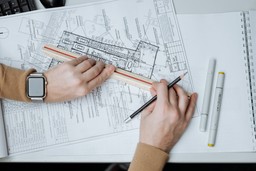Sustainable architecture is a multifaceted concept that takes every element of design into consideration, from the planning and structure of the development to the materials that are used. According to a survey conducted by Statistica, the majority of Australians take into account the sustainability of a product when they decide to make purchases. Cube Developments prides itself on creating projects that consider future environmental challenges and creates designs that reduce environmental impacts wherever possible.

Sustainable Materials
In the realm of construction, environmentally conscious materials, often referred to as green building materials, are characterised by their minimal environmental impact throughout their production, installation, and maintenance processes. Additionally, these materials should predominantly originate from natural sources such as soil, adobe, wood, cork, bamboo, straw, sawdust, and similar elements.
Nine sustainable building materials include:
- Green thermal insulation
- Structural insulated panels
- Recycled metal
- Reclaimed wood
- Engineered wood for cross-laminated timber buildings
- Precast concrete slabs
- Bamboo
- Cork
- Cement made out of recycled plastic
Eco-Friendly Inclusions and designs
Global electric vehicle (EV) sales increased by more than 50 per cent from 2021 to 2022, making up a total of 14 per cent of all new cars sold in the world. Cube Developments is proactively integrating electric car charging infrastructure into their projects through collaboration with Jet Charge, addressing the growing demand for eco-friendly transportation. Further to this, Cube Developments have an increased allocation of bicycle storage which encourages residents to consider ‘greener’ transportation options.
In the planning of a Cube Developments residence, much consideration is placed on the planning of window and door types as well as locations to maximise cross ventilation and natural light so as to help mitigate the need for the use of air conditioning and lighting where it can be avoided
Environmental Preservation
It is undeniable that construction sites are disruptors of natural ecosystems however with growing population numbers, the need for new properties is unavoidable. A reintroduction of native plant species at the completion of construction can restore biodiversity and create lush nature spaces for residents to enjoy. Cube works collaboratively with Landscape architects and Local Ecologists who have a direct understanding of native plants and animals in the area to produce responses that are well considered, accommodating and regenerative
Sustainable architecture seeks to create structures that are in harmony with their surroundings, conserve resources, and support a better quality of life for both current and future generations. It plays a crucial role in mitigating the environmental challenges of the modern world and promoting a more sustainable and resilient built environment.



